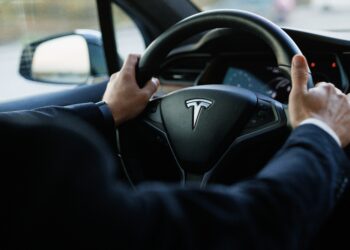Every smart city is made up of six domains. These domains are the organizations, services and resources that enable the city to come to life.
Article by Rana Sen**
A 360-degree smart city looks across every aspect of a city’s operations and uses technology to improve outcomes. The digital infrastructure of a smart city sets the stage for a network of partnerships all focused on one goal: Creating a smarter city. The result? An urban center that not only leverages technology to improve its own operations but connects with citizens, businesses and nonprofits in new ways.
The path toward the possible
Futurists have long envisioned smart cities of the future where residents and visitors thrive. Fine-tuned and seamlessly operated, these modern urban environments hum with advanced multi-modal transit systems, self-sustaining energy grids, clean and safe neighborhoods, integrated services and meaningful amenities.
While incremental progress has been made toward this bright future, cities and communities continue to face complex challenges, including infra- structure upkeep, population growth and migration, and sustainability issues.
From schools to businesses and transportation to energy, a holistic vision helps bring solutions to every aspect of urban life. Working together, new ideas and new technologies can be brought to bear in concrete ways that enhance the lives of citizens and create a brighter future.
Quality of life
A positive quality of life involves enhancing every aspect of the daily existence of citizens. From safe streets to green spaces, from a reasonable commute to access to art and culture, a smart city creates an environment that promotes the best of urban living and minimizes the hassles of city life. Smart cities are ultimately great places to live.
Economic competitiveness
Cities have long been important centers of trade and commerce, leveraging the proximity of so many diverse citizens to help drive an innovative economy. A smart city is a business-friendly city, ensuring that jobs and tax revenue form a healthy economic platform.
Sustainability
A smart city ensures that economic growth and quality of life are promoted not just in the short term, but for future generations as well. Being a good steward of the environment and promoting sustainable consumption of natural resources is part of the overall smart city vision.
A successful smart city strategy will hinge on the ability of cities to innovate within six key domains: economy, environment and energy, government and education, living and health, mobility, and safety and security. Learn how you can expand on these strategies to create customized applications for your city.
6 strategies to turn your smart city vision into reality
Economy
With digitization and disruptive technologies changing the requirements of many jobs today, smart cities will have to develop strategies to address jobs of the future that will power Industry 4.0. Advances in technologies will also help streamline government procedures, providing a seamless experience to businesses.
Environment and energy
For a smart city to live up to its name, using technology to foster sustainable growth is essential. Cities must push toward wiser use of resources, from implementing sensors that detect leakage to using behavioral economics and gamification to encourage citizens to make thoughtful decisions on resource use.
Government and education
Smart cities should rely on analytics to help them develop insight-driven policies, track performance and outcomes, enable constituent engagement, and improve government efficiency. Data and analytics will also help next-generation teachers adapt their learning and counseling to maximize student success. In this next-gen learning environment, we’re likely to witness more personalized and blended education plans that include virtual learning opportunities.
Living and health
A truly smart city uses technology and connectivity to enhance the daily lives of its residents. Cities should encourage connected communities through constructing smart buildings, innovating in the health care sector, and using data to monitor and enhance social programs.
Mobility
Mobility has become as much about bits and bytes as it is about physical infrastructure. In smart cities, integrated mobility systems that include shared mobility services and autonomous vehicles, the Internet of Things, and advanced analytics, enable people and goods to move faster, safer, cheaper and cleaner.
Safety and security
As crime becomes smarter and more high-tech, public safety and security agencies need to follow suit. In smart cities, data will play an increasingly important role in crime prevention as agencies try to preempt crime by tapping into all streams of data including social and crowdsourced information.
**The author is Director at Public Sector in Deloitte Consulting and heads the Transportation & Intelligent Cities initiative at the firm.












